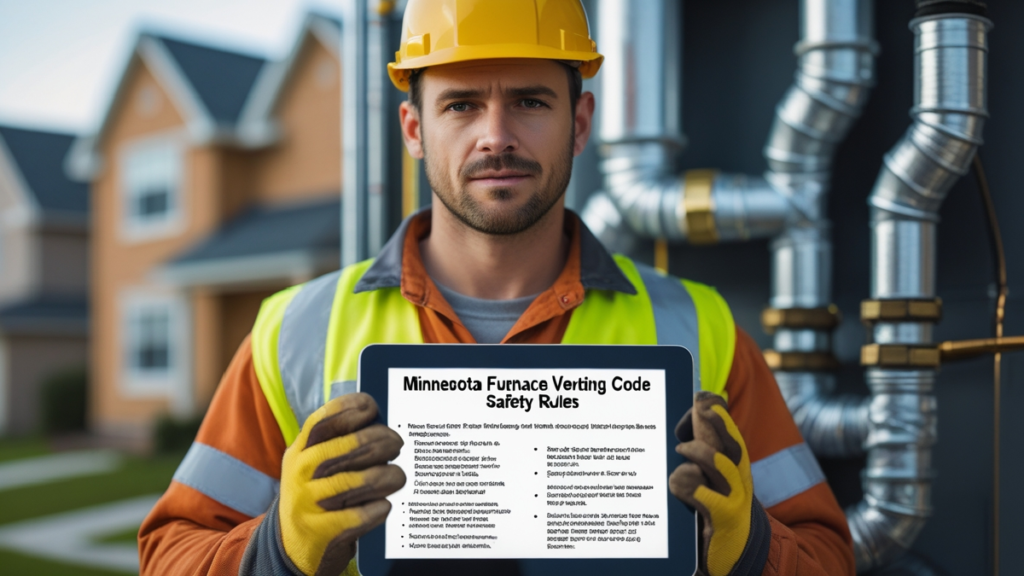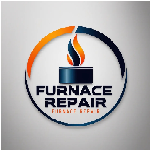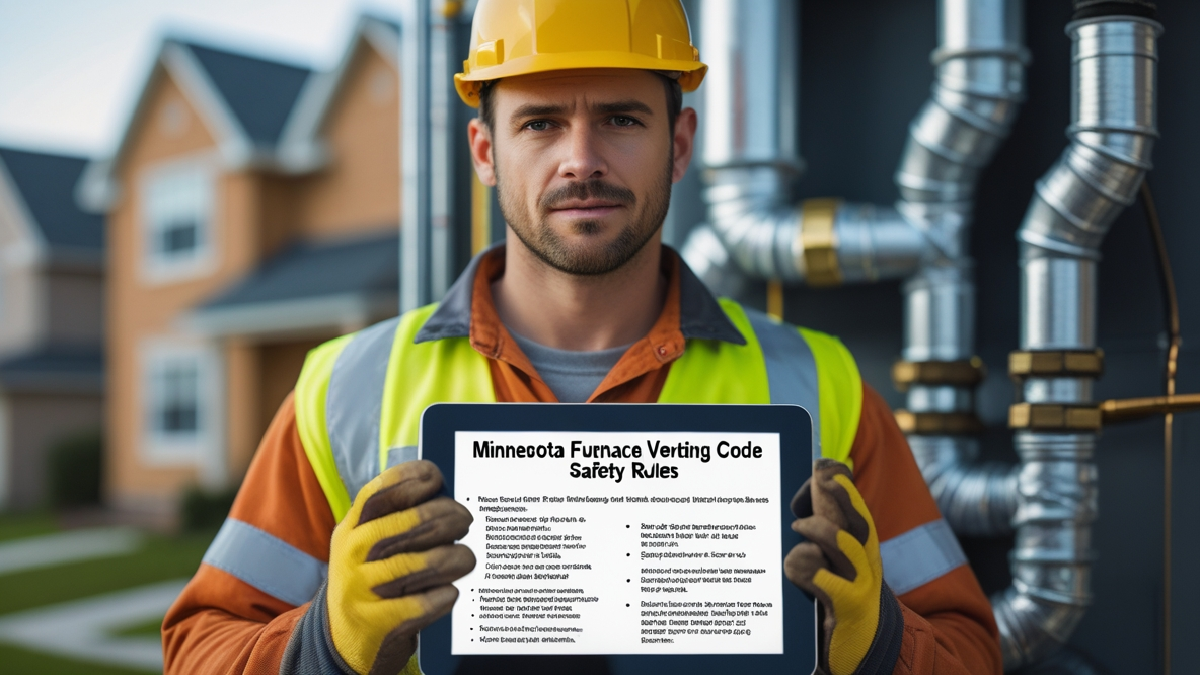Understanding the Minnesota Furnace Venting Code
The Minnesota furnace venting code is a fundamental set of regulations designed to safeguard residents and property from the dangers associated with improper venting of furnace exhaust gases.
It lays out precise standards for how heating appliances, such as gas furnaces, boilers, and water heaters, must be vented to the outside environment. This code is not merely a bureaucratic requirement but a vital safety protocol that ensures the effective removal of hazardous gases like carbon monoxide, which can be deadly if accumulated indoors.

For homeowners and property managers in Minnesota, a thorough understanding of these regulations is essential to ensure compliance, safety, and optimal system performance. This guide aims to demystify the key regulations, recent updates, and practical considerations necessary to meet Minnesota’s venting standards confidently and effectively.
Historical Context and Regulatory Framework in Minnesota
The Minnesota furnace venting code is embedded within a broader regulatory framework that aligns with national standards such as the International Mechanical Code (IMC) and guidelines from the National Fire Protection Association (NFPA).
Minnesota furnace venting code The Minnesota Department of Labor and Industry (DLI) plays a pivotal role in overseeing the enforcement of these codes. They establish and update regulations, conduct inspections, and ensure that all venting systems installed within the state adhere to safety standards.
The regulatory framework also incorporates local building codes, which may vary slightly depending on city or county ordinances, but all must comply with the overarching state regulations.
Understanding this historical and regulatory context helps property owners and HVAC professionals appreciate the importance of adherence to these standards, not just for legal compliance but for the safety and well-being of building occupants.
Key Components of the Minnesota Furnace Venting Code
The core of Minnesota’s furnace venting regulations revolves around several critical components that govern the design, installation, and maintenance of venting systems. These components include the selection of appropriate vent materials, proper sizing of vent pipes, correct routing, and secure termination points.
Minnesota furnace venting code Each element is designed to prevent dangerous backdrafting, ensure adequate airflow, and avoid obstructions that could compromise the integrity of the venting system.
Proper vent material selection is essential to withstand the high temperatures, moisture, and corrosive elements encountered in Minnesota’s cold climate. Vent sizing must be precise, based on appliance output and vent length, to prevent backpressure or inefficiency.
Routing considerations involve ensuring vents are installed with a slight upward slope for drainage, avoiding exposure to snow or debris, and positioning termination points away from windows, doors, and air intakes. Maintenance and regular inspections are also integral to ensuring ongoing safety and compliance, preventing blockages, corrosion, or damage that could compromise the system’s performance.
Important Regulations for Vent Material and Construction Standards
The Minnesota code specifies strict standards for vent materials to ensure durability and safety. Because of the region’s cold climate, vent pipes must resist corrosion and withstand freezing temperatures. Approved materials include PVC, CPVC, polypropylene, and stainless steel, each selected based on specific application requirements.
Minnesota furnace venting code For example, PVC and CPVC are commonly used for direct vent applications due to their corrosion resistance and ease of installation, while stainless steel is preferred for high-temperature exhaust or in situations where increased durability is necessary.
Construction standards emphasize the importance of secure fastening, airtight joints, and proper sealing of all connections. This prevents leaks of hazardous gases into living spaces and ensures the longevity of the venting system.
Proper installation also involves inspecting for cracks, damage, or corrosion during setup, and replacing any compromised components immediately. These standards are designed to create a durable, leak-proof system that maintains safety and efficiency over the lifespan of the heating appliance.
Venting System Sizing and Routing Requirements
Accurate sizing of venting systems is crucial to ensure the safe and efficient removal of exhaust gases. Minnesota’s code provides detailed guidelines for calculating the appropriate diameter of vent pipes based on the appliance’s BTU output and the total length of the vent run.
An undersized vent can cause dangerous backdrafting, leading to the potential buildup of carbon monoxide indoors, while an oversized vent can reduce efficiency and increase installation costs.
Routing requirements specify that vents should be installed with a slight upward slope, typically about 1/4 inch per foot, to facilitate gravity drainage of condensate and prevent moisture accumulation inside the pipe. Vents should avoid sharp bends, which can restrict airflow, and should be positioned to prevent snow accumulation or debris blockage.
Proper routing also involves ensuring the vent terminates at a safe distance from windows, doors, and air intakes, generally a minimum of 3 feet, to prevent exhaust gases from re-entering the building. Adhering to these standards ensures optimal performance and safety of the venting system.
Venting Termination and Clearance Standards
The termination point of a furnace vent is critical in dispersing exhaust gases safely into the atmosphere. Minnesota’s regulations specify minimum clearance distances from windows, doors, ventilation intakes, and combustible materials. Typically, the minimum clearance is three feet, but this can vary depending on the vent type, material, and specific site conditions.
The vent termination should be positioned to prevent snow accumulation, which could obstruct airflow, and should be equipped with weather caps or guards to prevent debris, animals, or blockages from entering.
Minnesota furnace venting code Proper termination not only ensures the safe dispersal of gases but also enhances the efficiency of the heating system by preventing downdrafts and backpressure. Regular inspection of termination points is recommended to ensure they remain clear and functional, especially after severe weather events.
Compliance with 2025 Updates and Future Regulations
The Minnesota furnace venting code is periodically revised to incorporate advances in safety standards, technology, and regional considerations. The upcoming 2025 updates are expected to introduce more stringent requirements for vent materials, increased clearances, and enhanced safety features such as automatic shut-off mechanisms or sensors that detect vent blockages.
Minnesota furnace venting code Staying informed about these changes is vital for property owners and HVAC professionals. Non-compliance with future standards could result in fines, system failures, or safety hazards.
The updates aim to improve overall safety, energy efficiency, and environmental impact, aligning Minnesota’s standards with national trends and innovations in venting technology.
Regularly consulting the Minnesota Department of Labor and Industry’s resources and participating in ongoing training ensures that your systems remain compliant and safe.
Practical Installation Tips for Compliance and Safety
To achieve compliance with Minnesota’s venting regulations, it is highly recommended to work with licensed HVAC professionals experienced in local codes.
Proper planning involves selecting approved materials, calculating vent sizes accurately, and following routing guidelines meticulously.
During installation, ensure all joints are sealed airtight, vents are supported securely, and termination points are correctly positioned.
Post-installation maintenance is equally important. Regularly inspect vents for signs of corrosion, damage, or blockages, especially after snowstorms or severe weather.
Minnesota furnace venting code Minnesota furnace venting code Keep vents free from snow, ice, and debris, and ensure that safety devices like carbon monoxide detectors are installed and functioning correctly. Educating yourself on the signs of venting issues, such as unusual odors or health symptoms, and seeking professional help promptly can prevent dangerous situations and ensure long-term safety and compliance.
Common Safety Tips and Best Practices
Safety should always be the top priority in furnace venting. Always use approved, Minnesota-compliant materials and follow manufacturer instructions during installation. Never attempt to modify or extend vent systems without proper knowledge and approval.
Minnesota furnace venting code Regular inspections are crucial to identify corrosion, damage, or obstructions that could impair vent performance. Clearing snow, ice, and debris from vents, especially during winter, is essential to maintain proper airflow.
Installing carbon monoxide detectors in key locations within the home provides an additional layer of safety, alerting occupants to potential venting failures.
Be aware of signs indicating venting problems, such as strange odors, condensation inside the home, or health symptoms like headaches or dizziness. If any issues arise, contact a qualified HVAC professional immediately to address and resolve the problem, ensuring the safety of everyone in the building.
Local Building Regulations and Resources for Minnesota Property Owners
In addition to statewide regulations, local building codes and permit requirements may impose additional standards or inspection procedures. Many cities and counties in Minnesota have their own regulations regarding venting clearances, permit processes, and inspection schedules.
It is essential to consult local building departments before starting any installation or upgrade to ensure full compliance.
The Minnesota Department of Labor and Industry offers valuable resources, including guides, technical standards, and a directory of licensed professionals who can assist with venting system installation and inspection.
Minnesota furnace venting code Working with qualified professionals not only ensures compliance but also provides peace of mind, knowing that your heating system is safe, efficient, and legally compliant.
Minnesota furnace venting code Staying informed about local regulations and maintaining open communication with authorities helps property owners and HVAC contractors stay ahead of potential issues and ensures long-term safety and reliability of the venting system.
If your furnace will not blow hot air, check out our detailed troubleshooting guide to fix the problem quickly and keep your home warm this winter.
Stay updated! Follow us on Facebook 👉 Your Page Name


Leave a Reply